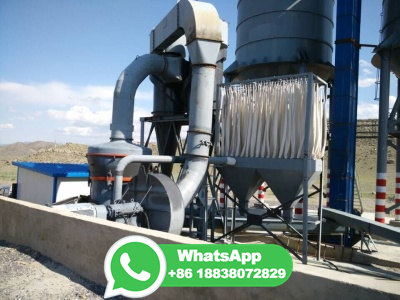
In the formation process of coal measure strata, if there were magmatic activities or volcanic activities, there would exist corresponding distributions of volcanic rocks and pyroclastic rocks. ... Characterization on anisotropic fractures of coal and rocks by computed Xray tomography based on image segmentation. Coal Geology Exploration, 37 ...
WhatsApp: +86 18203695377
Coal is formed from plant matter through a process spanning millions of years. Show this process by labeling the following image with the source material, intermediate product, and final product. A bituminous coal B lignite C peat. left to right: peat, lignite, bituminous coal.
WhatsApp: +86 18203695377
Coal is a combustible black or brownishblack sedimentary rock, formed as rock strata called coal is mostly carbon with variable amounts of other elements, chiefly hydrogen, sulfur, oxygen, and nitrogen. Coal is a type of fossil fuel, formed when dead plant matter decays into peat and is converted into coal by the heat and pressure of deep burial over millions of years.
WhatsApp: +86 18203695377
There are several processes that contributed to the formation of coal, including: 1. Plant material accumulation: Coal was formed from the remains of plants that accumulated in swamps and wetlands. As these plants died, their remains fell into the water and began to accumulate in layers. 2. Peat formation: Over time, the plant material became ...
WhatsApp: +86 18203695377
Browse 10,874 authentic coal formation stock photos, highres images, and pictures, or explore additional coal mining or coal washing stock images to find the right photo at the right size and resolution for your project.
WhatsApp: +86 18203695377
This chapter discusses coal formation, coal types, and coalification the progression through the ranks of coal. ... Throughout this 'coalification' process, coal chemistry and other properties change. As shown in Table, Given ... Download fullsize image; Pyrite filling a preserved plant cell in fusinite (a) and finely ...
WhatsApp: +86 18203695377
Abstract. The transformation of vegetable matter into peat and coal is commonly regarded as proceeding in two steps, called the biochemical and physicochemical stage of coalification (Stach et al. 1982), respectively. Other terms, such as "first and second phase" (Mackowsky 1953), or "diagenetic and metamorphic stage" (Teichmüller 1962 ...
WhatsApp: +86 18203695377
Find Petroleum Natural Gas Formation stock images in HD and millions of other royaltyfree stock photos, illustrations and vectors in the Shutterstock collection. Thousands of new, highquality pictures added every day. ... coal formation process, Formation of coal vector illustration, gas and petroleum process, what is coal use for explanation ...
WhatsApp: +86 18203695377
Question 1 of 20: Select the best answer for the question. heat and pressure swamp peat lignite coal time Coal formation (Image by Siyavula Eduation (Own worl CC BY 20 pcres via fick What are the two processes underlying this image that turn peat into coal? 1. and coalification B. Peatification and
WhatsApp: +86 18203695377
Coal is the second most important fuel currently used by mankind, accounting for over 25% of the world's primary energy supply. It provides 41% of global electricity supplies and is a vital fuel or production input for the steel, cement, and chemical industries. However, coal is a fossil fuel formed from organic material by geological ...
WhatsApp: +86 18203695377
Download : Download highres image (528KB) Download : Download fullsize image; Fig. 1. Coal bed methane production process. ... ultimately resulting in the formation of coal [3]. This process occurs gradually over an extensive timeframe spanning millions of years. Methane and carbon dioxide are two of the many by product gases that are ...
WhatsApp: +86 18203695377
There are two main phases in coal formation: peatification and coalification. Bacterial activity is the main process that creates the peat during peatification. Increasing temperature and pressure from burial are the main factors in coalification. [2] To form coal, the following steps are followed (Figure 2 illustrates these steps): [5] [6]
WhatsApp: +86 18203695377
Question: Question 36 2 pts The process of coal formation occurs best in: The Ocean The tips of mountains River deltas and costal plains The air Lakes and Ponds Show transcribed image text There's just one step to solve this.
WhatsApp: +86 18203695377
They are fossilized with no change during the coal formation process. The other constituents of the plant matter cellulose, lignin, and proteins, and minerals are converted into 2 parts Humic Substance and Inert Carbonaceous Matter. ... [Image will be Uploaded Soon] Order of Decomposition. In the process of coal formation, first, the ...
WhatsApp: +86 18203695377
Image via Pixabay. Coal is still one of the largest sources of energy worldwide, although it's being phased out in many parts of the world due to its climate impact (we'll get to that a bit...
WhatsApp: +86 18203695377
The mechanism behind one of the first stages of coal creation may not be what we thought it was, according to a team of researchers who found that microbes were responsible for coal formation...
WhatsApp: +86 18203695377
(Image credit: VectorMine via Getty Images) Not all peat transforms into coal; some erodes or dries out. To begin the process of coalification, the peat must be covered by something inorganic, such as silt from a wide river delta.
WhatsApp: +86 18203695377
Examples of unconventional fossil fuels include oil shale, tight oil and gas, tar sands (oil sands), and coalbed methane. Figure e : Conventional oil and natural gas deposits are trapped beneath impervious rock (gray). Conventional natural gas may be associated with oil or nonassociated. Coalbed methane and tight gas found in shale and ...
WhatsApp: +86 18203695377
Coal is classified as a sedimentary rock. It is a common nonrenewable fuel used mainly in the production of electricity. It is a fossil fuel because it forms from dead plant matter. The quality of coal depends on how it formed; as the organic matter is subjected to greater heat and pressure, the carbon content increases.
WhatsApp: +86 18203695377
Coal is formed from the remains of plants, by a process called coalification. The whole process starts with the remains of dead plants, which must be buried in an oxygenpoor or oxygenfree environment, to avoid complete decomposition. Usually, these are swamptype environments. The coalification process takes place over millions of years.
WhatsApp: +86 18203695377
The formation of coal takes millions of years, which is why it is an exhaustible and nonrenewable natural resource. It was formed around 300 million years ago when the earth was covered with swampy forests. When plants in these forests mainly trees, mosses, ferns, and reeds died, they fell into the swamps.
WhatsApp: +86 18203695377
In the coalification process, the coal rank increases from lignite to anthracite, as shown in Figure Coal rank is useful in the market, because it is a quick and convenient way to describe coal without a detailed analysis sheet. A more detailed description of coal rank is shown in Tables and
WhatsApp: +86 18203695377
A diagram is given illustrating the extent of change in the plant material, in comparison with diagenetic and metamorphic intensity. Since coal beds generally include various proportions of the diverse materials resulting from the three processes, practical classification of coal is intimately related to the part each process has played.
WhatsApp: +86 18203695377
Lignite is the first stage of coal formation after sediment compresses peat. It is soft and brownishblack coal that has the lowest energy content and the highest moisture content of all coal types. Lignite coal contains 25%35% carbon, giving it the lowest energy content of all coal. This is because it is a relatively young material, around 60 ...
WhatsApp: +86 18203695377
Find Oil Gas Formation stock images in HD and millions of other royaltyfree stock photos, 3D objects, illustrations and vectors in the Shutterstock collection. Thousands of new, highquality pictures added every day. ... coal formation process illustration, coal formation diagram, mining process concept, mining process for infographic content ...
WhatsApp: +86 18203695377
Iron ore sinter is considered the main ironbearing burden of the blast furnace (BF) ironmaking, which accounts for more than 75 pct of all the raw materials in BF.[1,2,3] Iron ore sintering process consumes about 10 pct of the total energy in an integrated steel plant of which 7580 pct is supplied by the combustion of solid fuels, such as coke breeze and anthracite.[4,5] After the ignition ...
WhatsApp: +86 18203695377
Coal formed millions of years ago when the earth was covered with huge swampy forests where plants giant ferns, reeds and mosses grew. As the plants grew, some died and fell into the swamp waters. New plants grew up to take their places and when these died still more grew. In time, there was thick layer of dead plants rotting in the swamp.
WhatsApp: +86 18203695377
The rapid burial of massive volumes of plant material torn loose during the Flood accounts for today's extensive, buried coal layers. Anyone with mud, sticks, and fire can make a coallike material called charcoal. 5 Geological coal and charcoal are both black, but coal seams have tiny layered structures.
WhatsApp: +86 18203695377